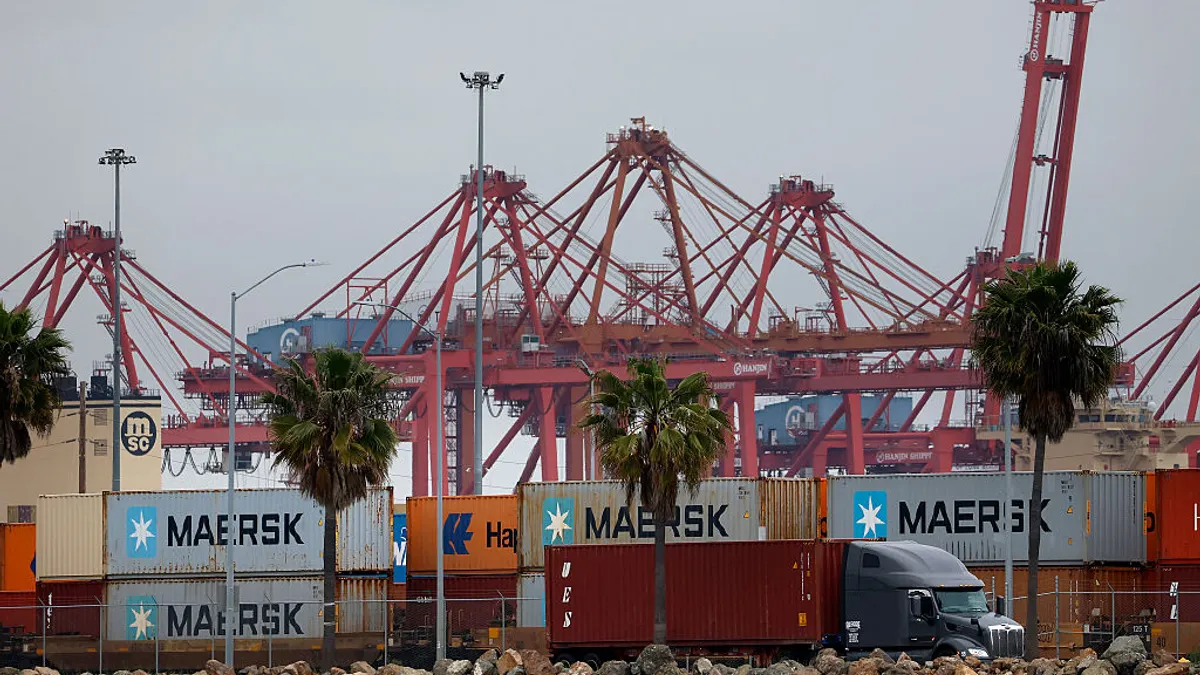Trey M. Gowdy is a research lead at the Duke University Nicholas Institute for Energy, Environment & Sustainability. He is a 2024 Clean Energy Leadership Institute fellow.
There have been many, many, many, headlines over the last year or so about a slowing electric vehicle industry. Yes, it’s been a bumpy road. Demand has been dynamic and some manufacturers have struggled to align demand to production. Consumers have hesitations, too, according to survey data. But the issues raised can be addressed. As a whole, EV demand has been rising when you zoom out beyond the day's news, be they quarterly earnings or policy fluctuations.
Any transition from gas vehicles to EVs, or other automotive technology, will take time. That’s expected.
According to federal data, there are more than 283 million vehicles registered in the United States — cars, buses, trucks and motorcycles. The average age of light-duty vehicles on the road — passenger cars and light trucks — is just over 12 years. Car ownership in the U.S. averages about 8 years according to insurance industry estimates. A vehicle purchase or lease is a major financial decision for most and happens infrequently — maybe once or twice a decade. This helps to explain why the move to EVs is gradual. People simply don’t replace their vehicles often — unlike other technologies like smartphones or LED lightbulbs that have seen rapid uptake lately.
In the third quarter of this year 8.9% of new vehicle sales were electric — a percentage point higher than last year. Five years ago? This figure was under 2% of new vehicle sales. The used EV market is more nascent and is dependent on the number of previously new EVs available to new buyers.
What if we waved a magic wand? If all new car sales right now were EVs — a target for more than a dozen states by 2035 — it would still take at least a decade and likely far longer to fully transition to electric vehicles. This is due to the hundreds of millions of personal and fleet purchases that would need to occur within the time constraints of vehicle changeovers. It takes time.
EV charging station buildout will take time, too. For some perspective, the U.S. interstate highway system took decades to complete, and work remains to address how highways interact with our communities. Rural electrification across the U.S. took a few decades. The EV transition is just as ambitious as these examples. It’s a consumer technology plus an infrastructure buildout.
Right-sizing vehicle production to consumer demand, which is not unique to EVs, and expanding charging options to where people live, work and travel are complex, interconnected issues. This is a dynamic market with many actors. Swapping out gas vehicles for EVs where possible — or any lower-carbon technology — was never going to happen overnight; or in five years; or a decade. We may reach EV parity in the late 2030’s, according to one projection. Federal, state and local policy play an important role in the EV sector and timing of increased EV uptake. Federal incentives have been variable for many years and uncertainty in this realm can affect timing, too.
Why move away from internal combustion engines, where feasible, in the first place? EVs generate less emissions — including accounting for upfront manufacturing intensity — require less maintenance (no oil changes, fewer moving parts to break) and their batteries can be used as power sources themselves in a pinch. No technology is perfect, but they have many advantages. So do hybrids and plug-in hybrids. Other technologies and fuels may play a role in our transportation future, too. And certainly, for better transportation networks as a whole, we need more options like walkability, dedicated bikeways and public transit, in addition to increasing EV rates for personal and fleet vehicles.
The built-in timeframe stemming from the length of vehicle ownership and the hundreds of millions of vehicles in the U.S., while a challenge in reducing transportation emissions quickly, lets us strategically advance EVs. While the news of the day is impactful and there are financial realities, highlighting the time constraints allows us collectively to prepare our power grid for more electricity consumption, scale up EV production methodically and create more affordable options, strategically build charging station infrastructure, develop a competitive vehicle market, standardize charging connectors, design utility rates for EVs, prepare the workforce for EVs, educate consumers on the technology, plan for battery end-of-life, develop long-term funding mechanisms to offset likely declines in gas tax revenue and leverage the next technological breakthrough.
That’s a lot to do. But advances in each of these areas, which require long-term planning and investment, are happening. There are more than 3.5 million EVs on the road in the U.S. today, with dozens more models available than a decade ago. And EV charging is growing as well.
A transition to more EVs is not guaranteed. What is certain is that it will take patience and coordination. Even imagining 100% EV sales, there are built-in time constraints in vehicle changeover that would take decades to get to sweeping electrification. We should use that time effectively to plan accordingly and realize the benefits. The upside looks to be worth some patience and perseverance.






















